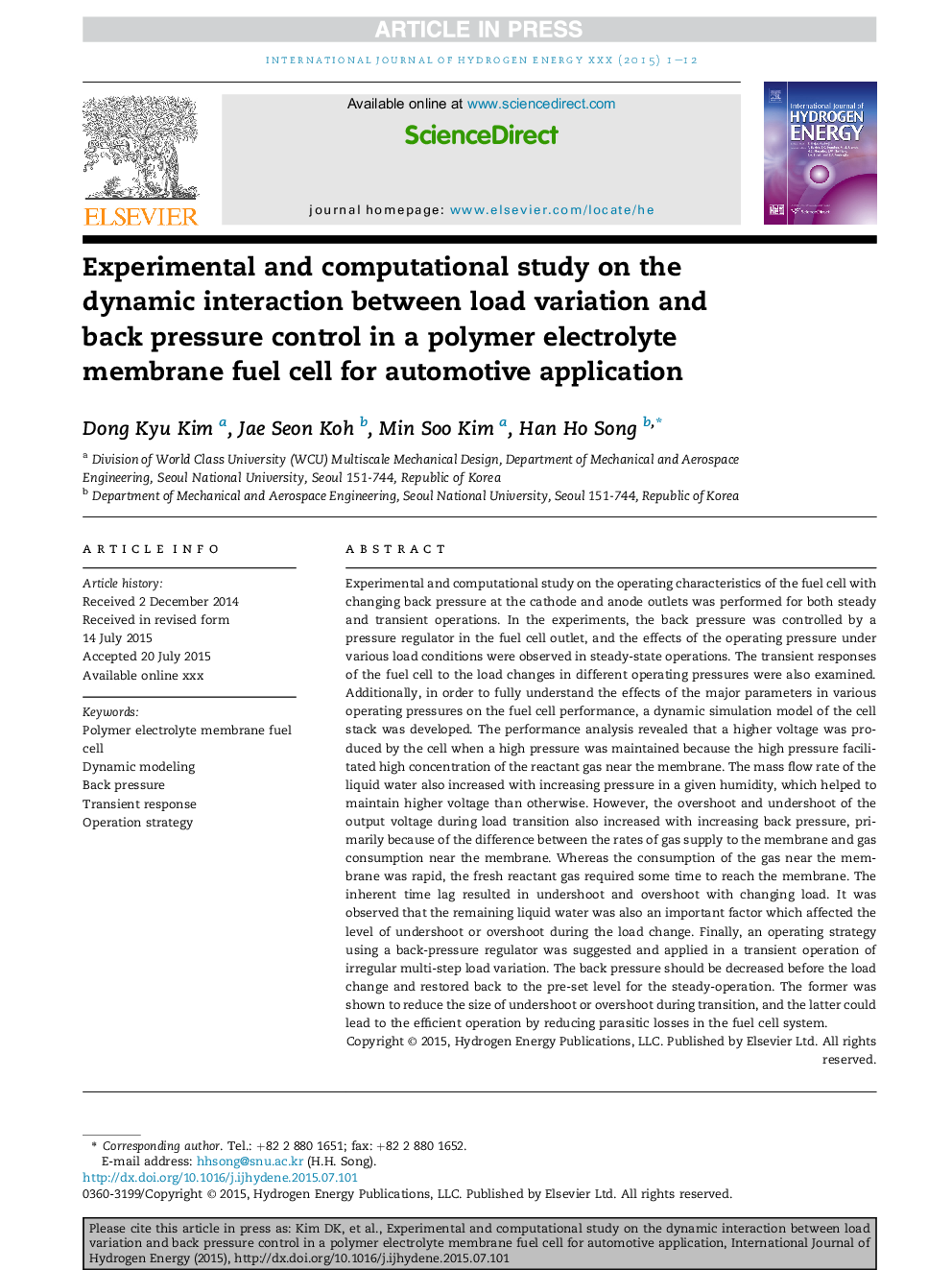| Article ID | Journal | Published Year | Pages | File Type |
|---|---|---|---|---|
| 7714213 | International Journal of Hydrogen Energy | 2015 | 12 Pages |
Abstract
Experimental and computational study on the operating characteristics of the fuel cell with changing back pressure at the cathode and anode outlets was performed for both steady and transient operations. In the experiments, the back pressure was controlled by a pressure regulator in the fuel cell outlet, and the effects of the operating pressure under various load conditions were observed in steady-state operations. The transient responses of the fuel cell to the load changes in different operating pressures were also examined. Additionally, in order to fully understand the effects of the major parameters in various operating pressures on the fuel cell performance, a dynamic simulation model of the cell stack was developed. The performance analysis revealed that a higher voltage was produced by the cell when a high pressure was maintained because the high pressure facilitated high concentration of the reactant gas near the membrane. The mass flow rate of the liquid water also increased with increasing pressure in a given humidity, which helped to maintain higher voltage than otherwise. However, the overshoot and undershoot of the output voltage during load transition also increased with increasing back pressure, primarily because of the difference between the rates of gas supply to the membrane and gas consumption near the membrane. Whereas the consumption of the gas near the membrane was rapid, the fresh reactant gas required some time to reach the membrane. The inherent time lag resulted in undershoot and overshoot with changing load. It was observed that the remaining liquid water was also an important factor which affected the level of undershoot or overshoot during the load change. Finally, an operating strategy using a back-pressure regulator was suggested and applied in a transient operation of irregular multi-step load variation. The back pressure should be decreased before the load change and restored back to the pre-set level for the steady-operation. The former was shown to reduce the size of undershoot or overshoot during transition, and the latter could lead to the efficient operation by reducing parasitic losses in the fuel cell system.
Keywords
Related Topics
Physical Sciences and Engineering
Chemistry
Electrochemistry
Authors
Dong Kyu Kim, Jae Seon Koh, Min Soo Kim, Han Ho Song,
